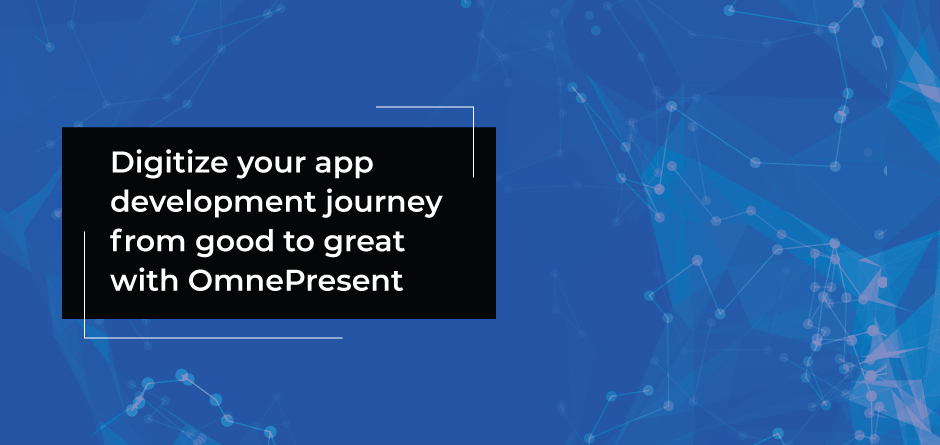
Digitize your app development journey from good to great with OmnePresent
Call it digital transformation or digitization, the process of making all your processes and interactions more technologically advanced has gained a lot of traction. And for good reason. While almost 90% of companies have some digital initiative or another, just about half of them have managed to bring it to scale, according to this Gartner report.
“Eighty-seven percent of senior business leaders say digitalization is a company priority, yet only 40% of organizations have brought digital initiatives to scale.”
What’s the reason for this? Before we dive a little deeper into why these organizations are failing to do so, let’s have a look at what exactly digitization entails.
What is Digitization?
Digitization is the reimagining, reengineering and replacing of business functions and applications to create more revenue generating opportunities. It is bringing an enterprise-wide “digital culture” that encourages the use of digital models for every process, interaction, or operation so that it is more streamlined and efficient using tools like AI, ML, NLP, low-code, and much more.
More importantly, digitization is providing new and reinvented omnichannel experiences to customers and other stakeholders. It is making every interaction with your customer simplified and delightful.
Despite digitization being pivotal at the given time, many companies are moving at a sluggish pace in implementing it at every level. The reason? Their coding methods. It goes without saying that the fabric of digitization is application development.
Unless the method of coding itself is not reconsidered, bringing about an enterprise-wide digitization is going to be a mammothian task. But change is always uncomfortable, and most companies are practically married to the way they code, despite its slow speed and inclination towards errors.
The need of the hour is digitizing the application development journey itself—using low-code platforms. Now, thanks to the popularity of low-code platforms, you may already know about their ability to accelerate application development and to easily integrate AI, ML, and BI, among other benefits.
But did you know that low-code platforms practically automate and super-charge your application development process through visual workflows? Its intuitive intelligence notifies you when there’s an error while giving you a bird’s eye view of your entire architecture. And this is just one of its capabilities.
But, why is there a need to digitize app development?
The simple answer is: customer expectation. It doesn’t matter what industry you’re in, customers want apps with an engaging UI, and they want them fast. Businesses are no longer compared to other brands in their sector but with every brand that has a spectacular app.
With innumerable apps by innumerable brands, what businesses are left with is a constantly shifting standard of what’s good in the market. This is why ‘business agility’ is the buzzword of the year. Businesses have to be prompt in making updates to their apps so that they don’t puff off amongst all the new disruptive apps.
In such a scenario, just improving older apps won’t suffice. What is required is digitizing customer journeys and processes of apps right from scratch, with no bearing on the older apps whatsoever. This is so that businesses don’t limit themselves with what was. The UI/UX needs to be reinvented based on data directly fetched from the end users, and a comprehensive understanding of their needs and motivations.
How OmnePresent is making it easier to overcome the complexities of app development.
OmnePresent Technologies – For over 7years they have been supporting organizations around the world in end-to-end digital transformations. They use multiple advanced technologies like low-code, cloud-based data warehousing, robotic process automation, business intelligence, and more, to digitize each and every part of your organisation, while offering 24/7 technical support.
To know more, visit omnepresent.com.
Conclusion
It takes a combination of a lot of elements to make digitization successful. Some of them are low-code platforms, UI/UX, automation, business intelligence, cloud capabilities and the workforce’s eagerness to apply these technologies and treat them as an opportunity to improve their efficiency. With these aspects sorted, an organization can look to scale and grow phenomenally in a world full of competitors.
RECENT POSTS
CATEGORIES
